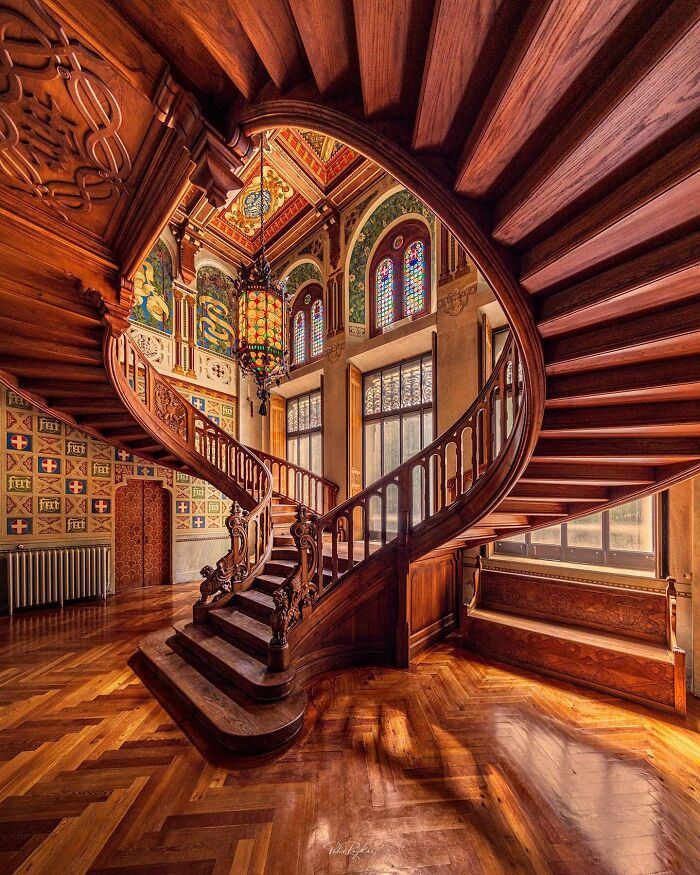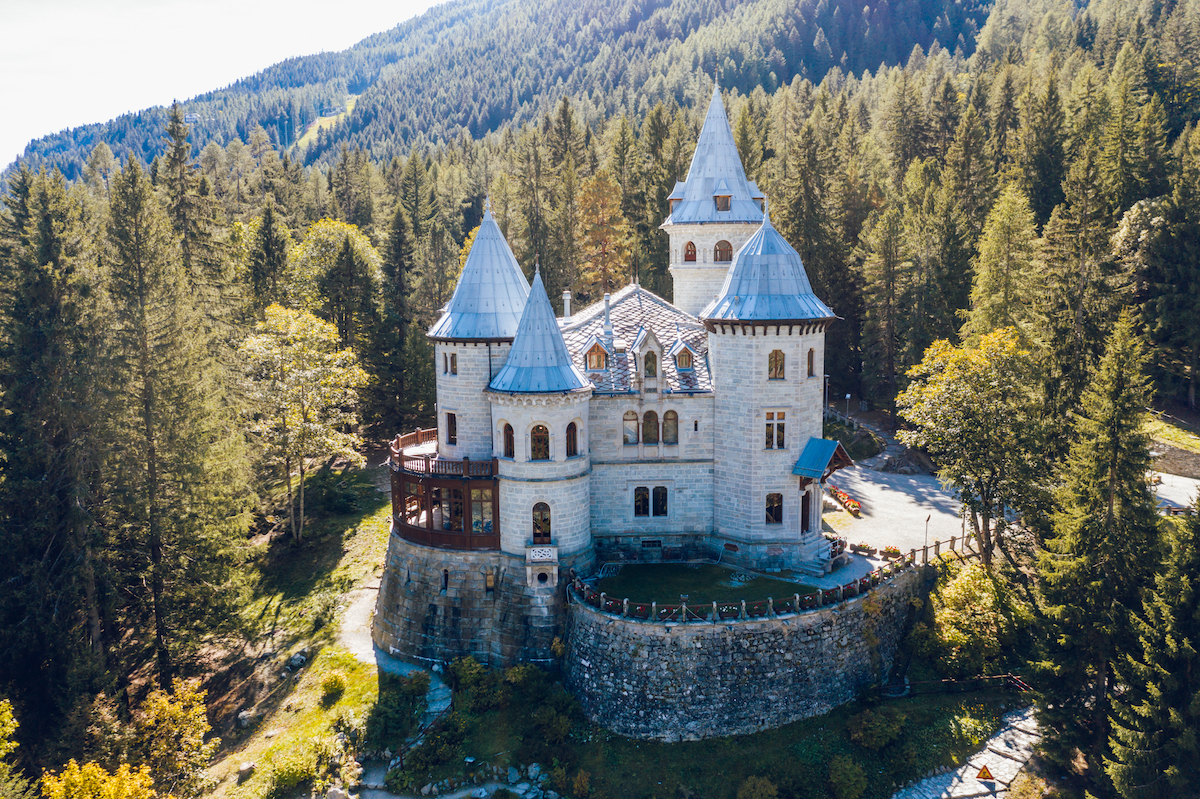Made of oak wood, this imperial staircase is located in Valle d'Aosta, northwestern Italy, in the Castel Savoia:


The Castel Savoia is a 19th century villa built as a holiday home for the Queen consort of the Kingdom of Italy Margherita of Savoy:



The Castel Savoia is a 19th century villa built as a holiday home for the Queen consort of the Kingdom of Italy Margherita of Savoy:





 I can shinny up a stepladders to paint a ceiling but that's the max.. Perlou is great at ferreting out this high-rise constructs which are stunning.
I can shinny up a stepladders to paint a ceiling but that's the max.. Perlou is great at ferreting out this high-rise constructs which are stunning. to you.
to you.
